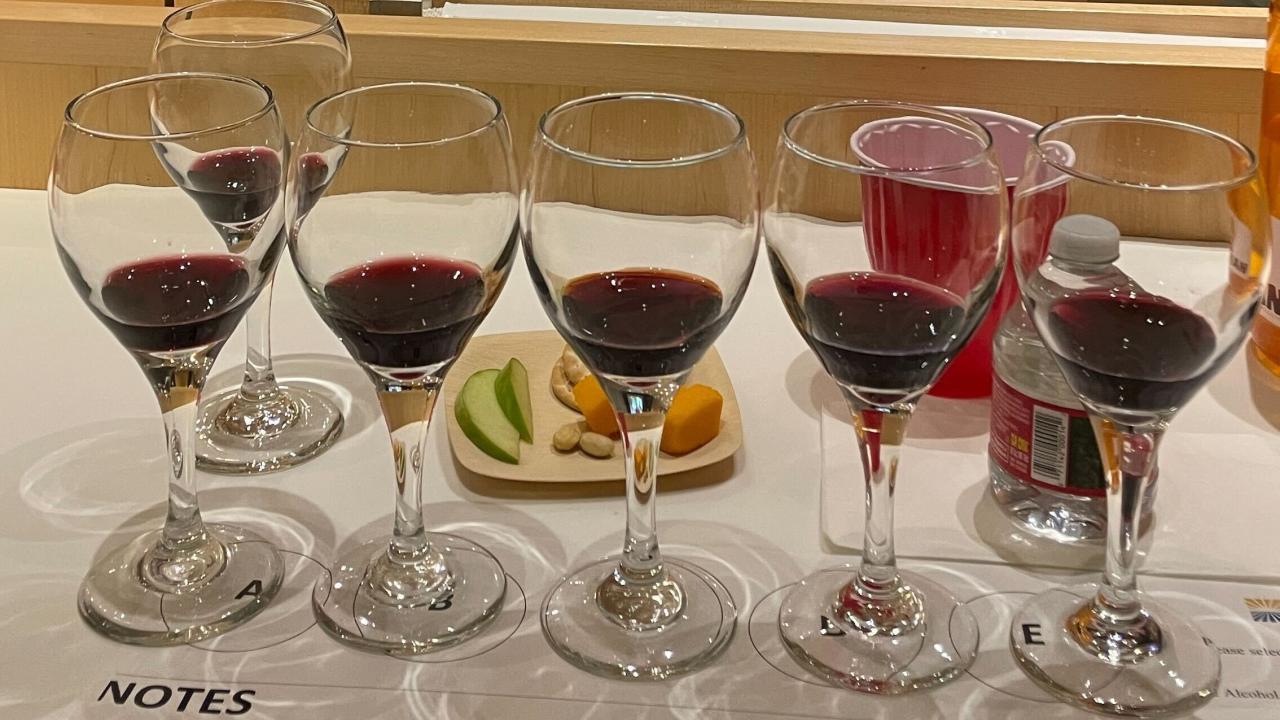
The Winemaker’s Toolkit
Tasting Wine Treatments
Every winemaker has a toolkit. Before, during, and after fermentation, the winemaker can use their tools to craft the wine they want to create, a wine that fits their style, the consumer’s desires, or the vineyard/region. Part of this toolkit is wine additions. These additions are dictated by the laws of the local wine region and, should the wine be exported, the wines of the importing country. Wine additions can, in some places, include sugar to boost the fermentation (and thus the final alcohol content), acid to give the wine more zing, or tannins, which give the wine bitterness, astringency and the ability to age in the bottle.
On November 1, the Robert Mondavi Institute for Wine and Food Science hosted “Exploring Wine Treatments” to give guests a glimpse into the winemaker’s toolkit. The event featured Dr. James Campbell and Dr. Andrew Waterhouse from the UC Davis Department of Viticulture and Enology alongside surprise guest Madeline Puckette, the founder of the viral wine education platform Wine Folly.
During the event, guests could taste a base wine alongside treated wines, a rare opportunity for members of the public! The base wine was a Napa Valley Cabernet Sauvignon, which served as the control for this tasting experiment. The wine treatments included additions of acid, alcohol, tannin, acetic acid, and sugar. Guests were then quizzed on which wine had received each treatment. The speakers guided guests through their thought processes, divulging how they approached the tasting and sharing clues for identifying various attributes when tasting wines.
In case you missed it, below are some tips to help you think analytically like a winemaker next time you reach for a glass of wine.
- Sweetness in wine is referred to as residual sugar, or the sugar left unfermented by the yeast. A wine can have residual sugar but not taste sweet; rather, the wine might have more body or fruitier aromas.
- Acetic acid is the primary acid in the wine flaw called volatile acidity. It’s generally considered a spoilage product because it causes the wine to smell like vinegar.
- Tannins make a wine bitter and astringent; you can tell they are in your wine if your mouth feels dried out after taking a sip. Tannins are most perceived in young red wines and will soften as time goes on.
- Acidity will make a wine tart and sour, like lemonade. Higher acid wines will also taste less sweet.
- Alcohol in wine comes from the fermentation of sugar in the grapes. Like tannin and sugar, alcohol can increase a wine’s body. It also contributes to a wine’s legs.
The next time you pour yourself a glass, whether it is Napa Valley Cabernet Sauvignon or something else, you too can try your hand at thinking analytically like a winemaker and contemplating the tools the winemaker used (or didn’t!) when crafting your wine.
The Robert Mondavi Institute hosted this event as a trial run for future tastings that delve into different aspects of wine. Seats are limited, so sign up for their newsletter to be the first to hear to be notified of upcoming events.

Kendal Koorenny is a current master’s student in the viticulture and enology program at UC Davis. She adores food, wine, and science and writing about it all! When she is not in class or working, you can find Kendal reading a book, crafting a new cocktail recipe, or spending time with her kitten.
